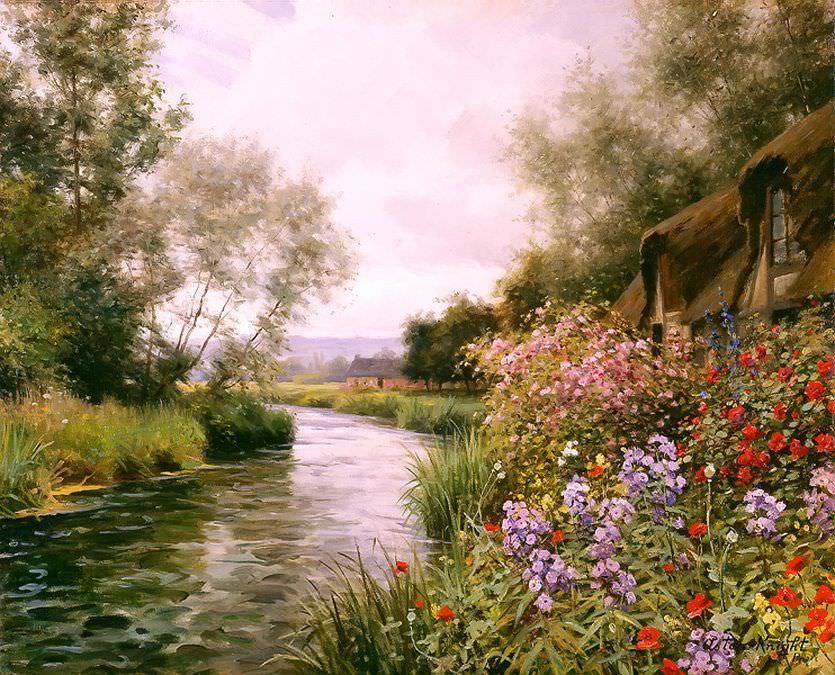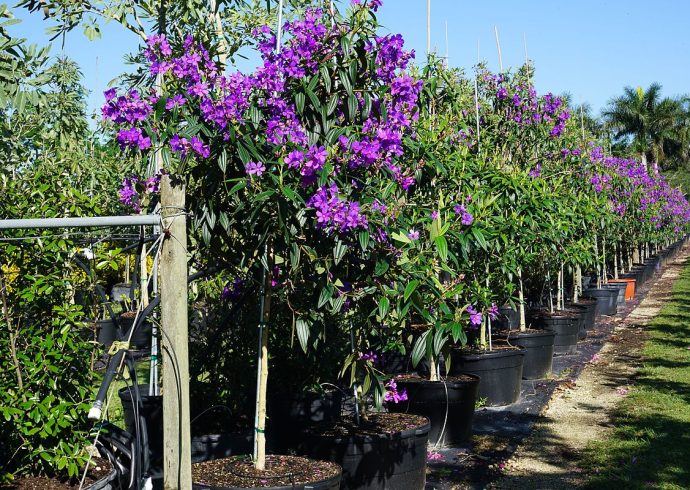
Planting a River Garden
For homeowners lucky enough to have a narrow river or babbling brook going through their yard, the desire to create a garden right next to it need not be a challenge. There are a number of flowers which thrive in soil that is consistently damp, whether the location be in full sunlight or partial shade. One of the best things about having a natural body of water as such on your property is the ability to enhance it naturally, making it appealing and practical as an outdoor living space. The garden can be a variation of the basic rock garden using larger rocks which line a small portion of the stream, or a simple garden using several flowers which grow well next to water. There are no set rules for designing a garden next to a narrow river or babbling brook, and it can be any size from several feet to a few yards.
Some flowers which are ideal for planting next to a narrow river, stream or babbling brook in your backyard are:
Saxifrage. Coming in the colors of white, pink, yellow, purple, and blue with over four hundred species across the globe, Saxifrage will attract pollinators to the garden. Purchase a species of saxifrage which will grow well next to water.
Claytonia. Not only are the flowers of the claytonia beautiful with their five-petal flowers, the leaves of this plant are edible, as are the roots. Also known as Miner’s Lettuce, Claytonia was previously classified as a member of the purslane family but now considered a member of the Montiaceae family. Claytonia comes in the colors purple, lavender, pink, and white.
Blue flag iris. Often found growing wild next to swampy areas, the blue flag iris has vibrant blue flowers that stand out everywhere they grow. The showy flowers blossom from May through June and are perfect to grow next to a stream.
Columbine. A member of the ranunculus family, the showy columbine flowers come in a wide range of colors: white, red, blue, purple, pink, and yellow. If the narrow river or babbling brook has a shady area, take advantage of it and plant the columbines there.
Pickerel weed. Ideal as a flower to plant on the edge of a river, pickerel weed has beautiful bright blue flowers which grow upon a spear-shaped base. A member of the Pontederia family, pickerel weed is an aquatic plant which can be dominant. What this means is, if you decide to plant pickerel weed, give it a large enough space to thrive so that it does not compete with other flowers planted near it.
Marsh marigold. Also known as Caltha palustris and Kingcup, the marsh marigold is also a member of the ranunculus family. Ranging from shades of yellow to orange, these buttercup member flowers will grow directly in the water if you let them. Plant them directly by the edge of the water and enjoy them from April through June when they blossom.
Buttonbush. A deciduous shrub, the buttonbush is a member of the Rubiaceae family and aptly named for its globe-shaped pink or white flowers with spindles covering it completely. The buttonbush will grow in any body of water up to twelve feet in height and blossoms from June through September.
Turtlehead. Named due to the shape of the flower, which resembles a turtle’s head, the turtlehead flower, also called chelone glabra, is a member of the Plantaginaceae family. The flowers are white and pink in color and blossom from July through September. Turtlehead flowers will attract pollinators and can be planted upon the bank of a river or stream.
Red lobelia. Also known as Cardinal flower, the red lobelia loves the moist soil by any natural body of water. A member of the bellflower family, red lobelia comes in the colors red, pink and white. Red lobelia will blossom from July to September.
When planting these flowers, target a specific location next to that river, stream or babbling brook. This could be near a bridge crossing the water or garden furniture placed nearby, such as a picnic table. As with any other garden, a birdbath and statuary can also be added, along with walking paths in between the planted flowers.
Image Credit: Louis Aston Knight, Public domain, via Wikimedia Commons.


